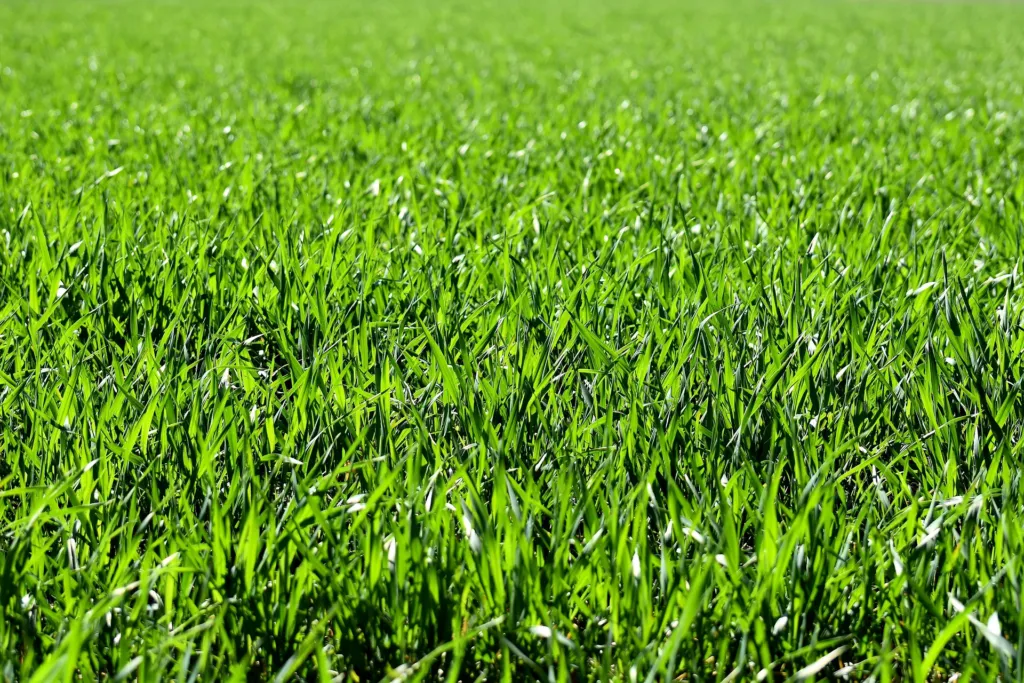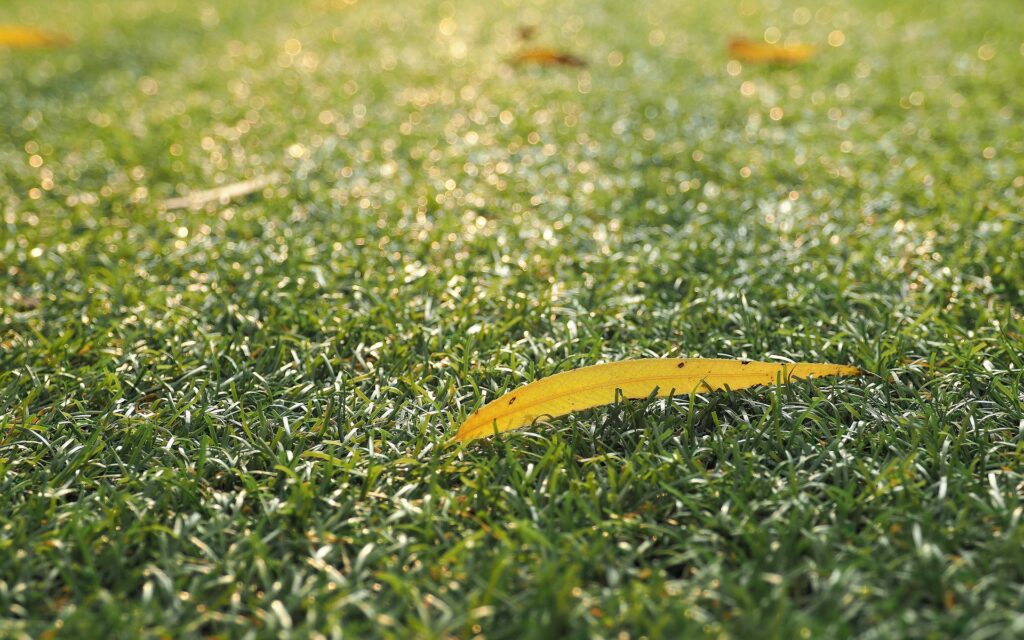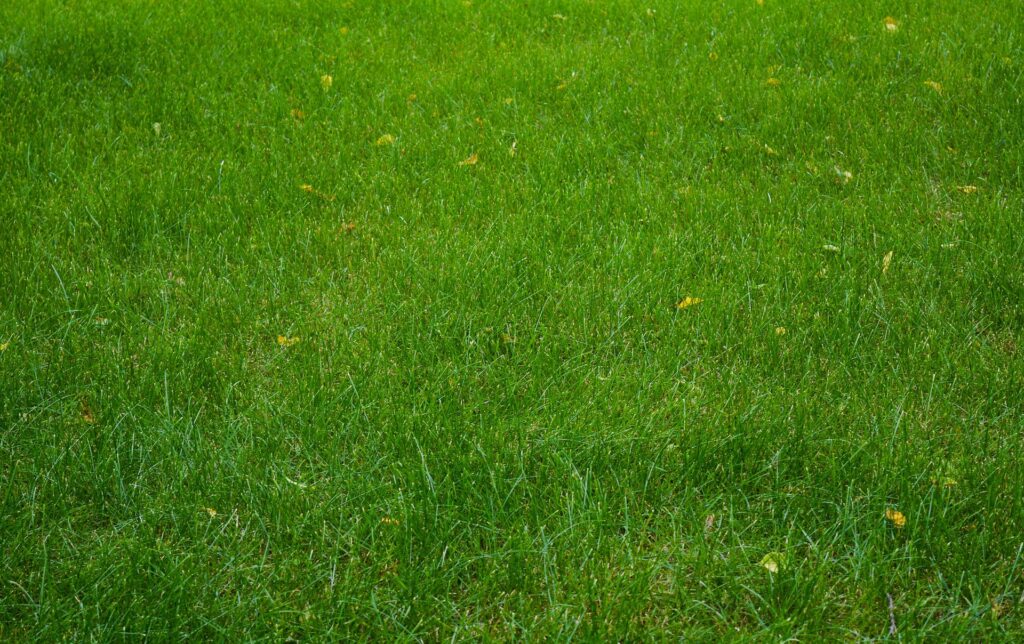
How to Overseed Your Lawn & Get Thicker, Greener Grass
Overseeding Creates the Picture-Perfect Yard of Your Dreams
When you walk past a yard that’s incredibly thick and green, chances are, lawn overseeding is the secret weapon. It’s a game-changer for any homeowner tired of patchy grass.
But overseeding is more than spreading seed and hoping for the best. Do it right, and you’ll crowd out weeds, revive tired turf, and build a lawn that’s ready for anything. Keep reading to learn more about overseeding your lawn so you can achieve the best yard on the block!
What Is Overseeding & Why Does It Matter?
Spreading new grass seed over an existing lawn without starting from scratch is known as overseeding.
The end result of overseeding? A thicker lawn with fewer bare spots and improved color. It also helps to create thicker, stronger turf that can crowd out weeds. So your lawn will naturally be more resistant to pests, disease, and drought.
But wait. Are overseeding and reseeding the same thing? They’re close, but no. Reseeding means ripping up old turf and starting over. Overseeding is the gentle, less disruptive cousin.

When Is the Best Time to Overseed?
When it comes to overseeding, timing is crucial. If you do it correctly, your lawn will grow thick and lush as a thank you. Here's what you should know:
- Late summer to early fall is the ideal season
- Depending on your climate, late August through October is the sweet spot. Ideal germination conditions are produced by warm soil, cool nights, and steady moisture. Additionally, the active growth season in the fall aids in the establishment of robust roots for new grass prior to winter.
- Why not in the spring?
- Although it's risky, spring overseeding can be effective. Before the young grass is resilient enough to withstand heat and drought, it must endure a harsh summer. If you must plant in the spring, start early and give it plenty of water.
- Rules for your climate & temperature
- The ideal soil temperature range is between 50 and 65 degrees F for cool-season grasses and between 60 and 70 degrees F for warm-season grasses.
- Steer clear of frost and intense heat because seeds won't germinate in extreme cold or hot conditions.
- Bonus rainfall & daylight
- Because of the shorter days in the fall, there’s less evaporation and the soil remains moist due to natural rainfall. Your grass will grow better with less watering on your part.
- Because of the shorter days in the fall, there’s less evaporation and the soil remains moist due to natural rainfall. Your grass will grow better with less watering on your part.
Choosing the Right Grass Seed
There’s no one-size-fits-all method for choosing the ideal grass seed. You have to find the one that best suits your climate, lawn, and way of life. Here are some things to keep in mind.
Kentucky bluegrass, fescue, and ryegrass
- Best for: Northern climates with cold winters and moderate summers
- These types of grass stay green in cooler months but may go dormant in summer heat
Try to match your existing lawn
For a uniform look, stick with your current grass type. Switching types? Be prepared for an awkward, in-between period of mixed textures.
Sun vs. shade tolerance
Full sun blends need more than six hours of direct sunlight daily. Shade-tolerant varieties can survive with just four hours of light.
High-Traffic vs. Low-Maintenance
Durable blends (perennial ryegrass, Kentucky bluegrass) can withstand kids, pets, and heavy use. On the flip side, easy-care options (tall fescue, Zoysia) will grow slower but need less mowing and watering.
How to Prepare Your Lawn for Overseeding
Overseeding is similar to painting a room. How well you prepare the surface in the beginning will determine the outcome in the end. You're wasting good seed if you don't follow these steps. To prepare your lawn for a makeover, follow these steps:
Make sure to mow to the proper height
- Trim the grass to a height of around two inches.
- You want the soil to be visible, so use bag clippings or a rake. Why? This allows seeds to touch the soil directly rather than resting on grass blades.
Take aim at the thatch
- For thick layers (greater than ½ inch), use a stiff rake or dethatcher.
Make sure to aerate
- If your soil feels hard, aeration is an especially important step.
- Liquid aeration also aids in the delivery of nutrients and water to roots.
Water beforehand
- 24 hours prior to seeding, lightly irrigate.
- The goal is moist soil rather than a mud pit.
Topdressing the soil is optional.
- Apply a thin layer of compost or enriched soil on top.
- If you think there might be a pH problem, test the soil first (sulfur for alkaline soil, lime for acidic soil).
For seeds to grow, they must come into contact with soil. Eliminating obstacles between seed and soil is the goal of each prep step. You’ll definitely be reseeding next year if you take shortcuts!

Step-by-Step Instructions for Overseeding Your Lawn
Overseeding your lawn is simple when you follow these key steps. Just take it one task at a time for the best results.
1. Mow & Prep Your Lawn
- Cut the grass shorter (about 2 inches) and get rid of any debris or clippings.
- To improve germination, rake the soil thoroughly to expose the seeds.
2. Evenly Distribute the Seed
- For consistent coverage, use a broadcast or drop spreader.
- For additional reinforcement, hand-seed exposed areas.
3. Rake Lightly Again
- To cover seeds with a thin layer of soil, gently move a rake over the seeded areas.
- This enhances soil contact while providing protection from wind and birds.
4. Put on Some Starter Fertilizer
- Unless your seed mix contains nutrients, use a starter fertilizer high in phosphorus.
- If you're using a three-in-one seed, fertilizer, and mulch product, skip this step.
5. Water Immediately
- Water your soil often and lightly (2 times a day at first) to keep it consistently moist.
- As grass grows, cut back on frequency and switch to deeper, less frequent watering.
But what tools and equipment are needed for the overseeding steps above? Atfer aerating your lawn, here’s everything you’ll require to properly overseed your yard.
- Lawn mower
- Garden rake or dethatcher
- Seed spreader
- Hose or irrigation system
- Optional: Power rake, slit seeder, topsoil
Overseeding Watering Schedule
We can’t overstate the importance of proper watering after you overseed. Here’s a quick schedule to stick to, especially during the first few weeks.
- Week 1: Twice daily, 5–10 minutes. Keep soil moist like a wrung-out sponge.
- Week 2: Once daily. Let soil dry slightly between waterings.
- Week 3+: 2–3x weekly, deeper soaks. Train roots to reach down.
Remember to pay attention to the weather, too. If there’s a sudden downpour, you can skip watering. But if a heatwave suddenly hits, you might need to add in a midday sprinkle.
When to Mow After Overseeding
When it comes to cutting freshly overseeded lawns, patience is worth it. Wait until your new grass is 3 to 4 inches tall. Cutting it too soon runs the risk of damaging the delicate young blades.
During the crucial first 1-2 weeks following overseeding, resist the urge to mow in order to allow seedlings to form sturdy roots. And never cut more than ⅓ of the grass height in a single mowing session. (Use razor-sharp blades when you mow for the first time as dull mower blades tear instead of cut.)
After the new grass has completely taken root and blended in with your old lawn, which usually happens four to six weeks after overseeding, you can resume your regular mowing schedule.
Common Mistakes to Avoid When Overseeding
Simple mistakes can ruin your overseeding success, even if you have the best of intentions. The following are the main dangers to be aware of:
Poor Timing
When seeds are overplanted during hot summers or cold winters, they either fry or freeze before they can establish. Be sure to wait until late summer or early fall.
Cheap or Wrong Seed
Bargain-bin seed may have weeds or fail to match your lawn type.
Skipping Soil Prep
Seeds need direct soil contact to thrive. Remember to always:
- Mow short and remove clippings
- Dethatch if layer exceeds ½ inch
- Aerate compacted areas
Inconsistent Watering
New seeds demand Goldilocks-level moisture. Not too much, but not too little.
Premature Mowing
Cutting too soon (before 3-4 inch growth) uproots tender grass. When you do mow, be sure to
use sharp blades and never remove more than ⅓ of the blade height.
Drowning Seedlings
Overwatering causes:
- Fungus growth
- Washed-away seeds
- Oxygen-starved roots
Most of the time, overseeding failures can be avoided. By addressing these typical mistakes, you can turn patchy turf into robust, thick grass.
FAQs About Lawn Overseeding
How long does overseeded grass take to grow?
Sprouts appear in 7-14 days, but full lawn thickness will take 4-6 weeks.
Can I walk on the lawn after overseeding?
Try to avoid any foot or car traffic for a couple of weeks. Of course, it all depends on the weather, turf varieties you overseeded with, and other conditions.
Should I fertilize before or after seeding?
Use starter fertilizer after seeding. It helps roots grow without burning young grass.
Can I overseed right after aerating?
Yes! Overseed within 48 hours of aerating. Those holes give seeds the perfect home.
How often should I overseed?
Every year for most lawns, especially if your grass gets heavy use.
The Need to Overseed
In the long run, overseeding this fall means fewer weeds, less watering, and a lawn that stays greener longer. So call the professionals at NexGreen today to attain the lawn of your dreams!
We offer lawn care services in Ohio communities around the areas of Westerville, OH and Columbus, OH.
We also provide pest control and lawn care services in Michigan for areas near Sterling Heights, MI and Rochester Mills, MI.
